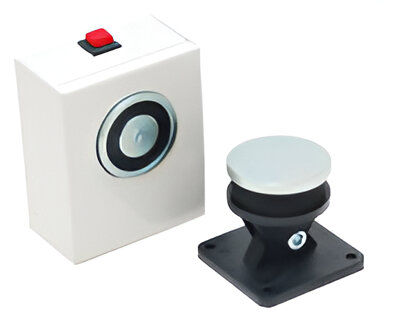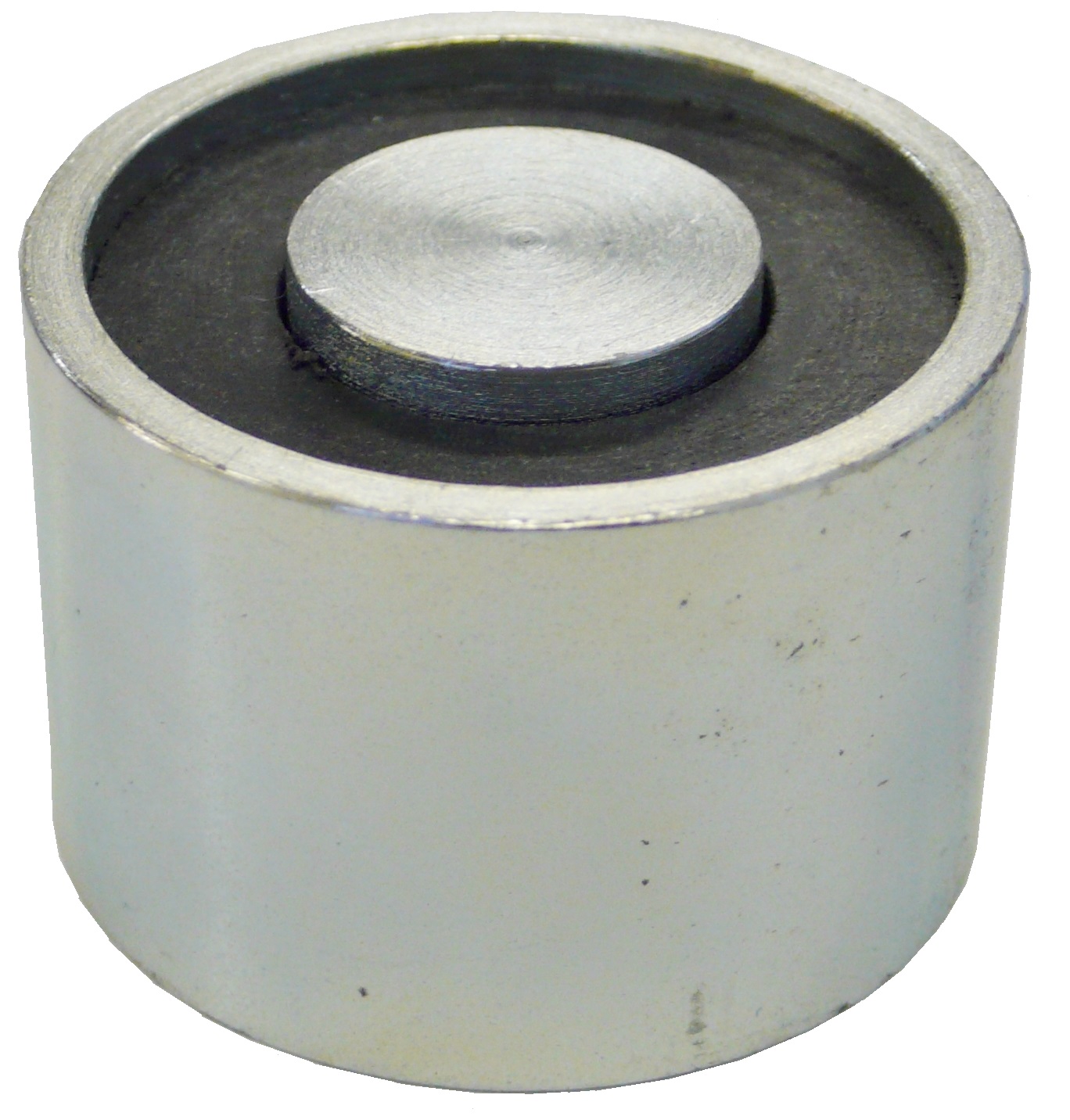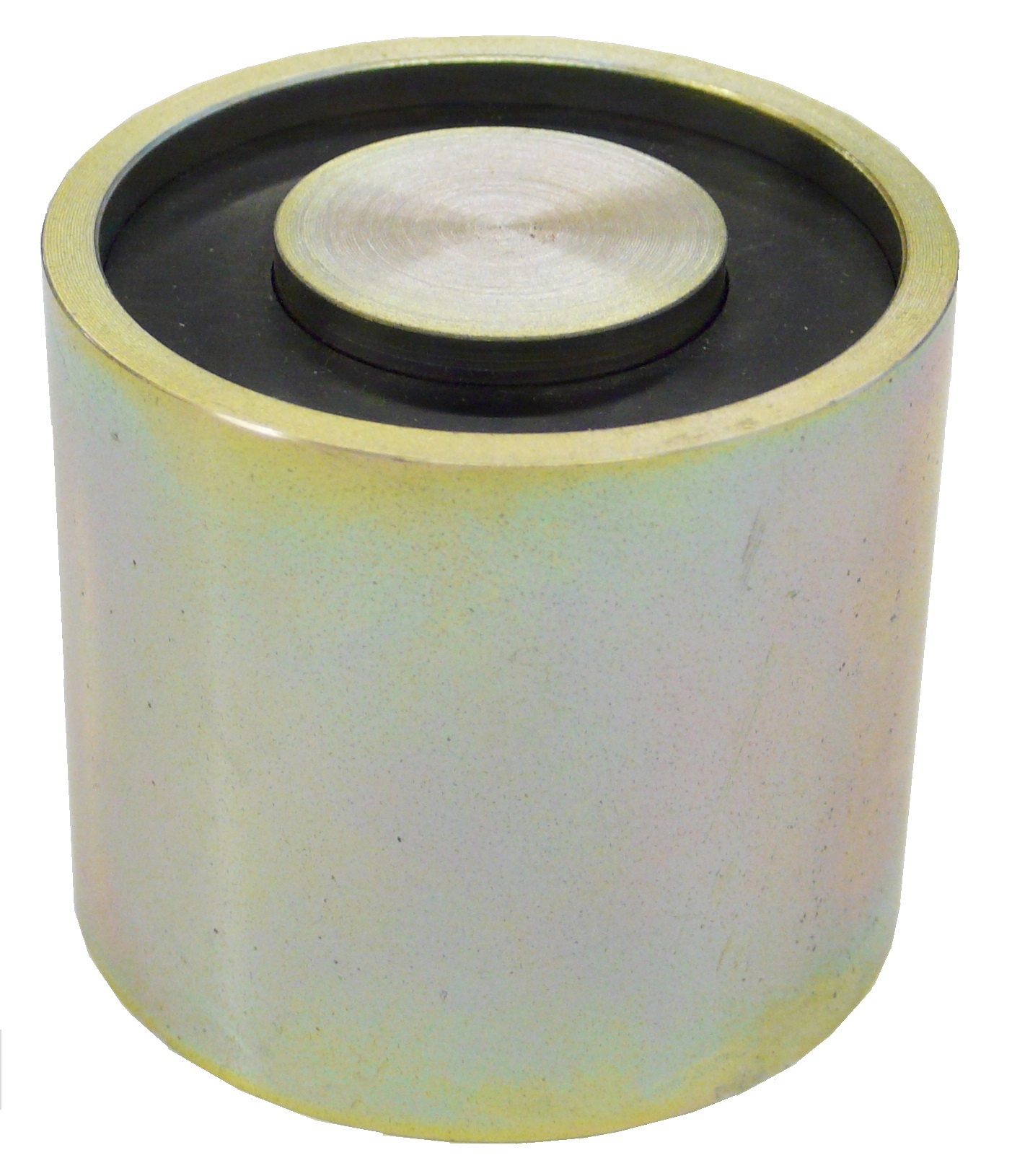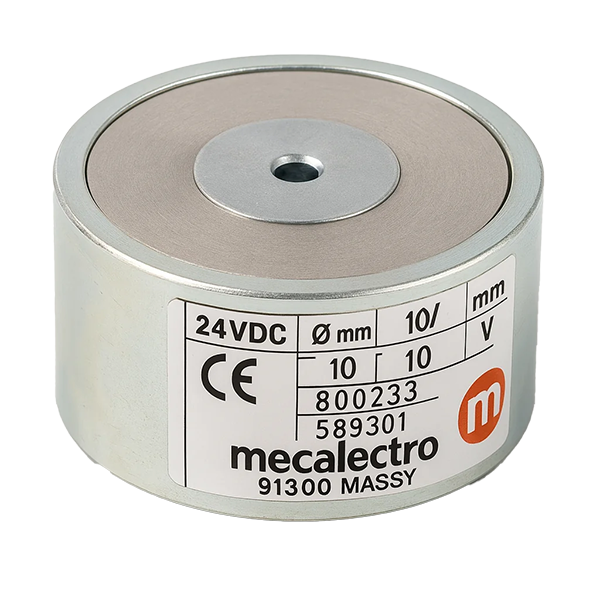Electromagnets
-
AC916ME05
51 mm × 70 mm × 85 mm
Surface mounting: 24 V DC
Holding force – 20 kg
Swivel anchor plate
Door status detection -
AC916ME07
51 mm × 70 mm × 85 mm
Surface mounting: 24 V DC
Holding force – 20 kg
Swivel anchor plate
Door status detection -
AC916MG
30,5 mm × 70 mm × 85 mm
Surface mounting
ABS housing
24 V DC
Holding force – 20 kg
Flat anchor plate -
AC918MEXX
80 mm × 110 mm × 128 mm
Floor mounting
24 V DC
Holding force – 40 kg
Flat anchor plate -
BEM10
Diameter: 30 mm
Mount: M4
Holding force: 12 kg
Locking: Power OFF
Power consumption: 3.5 W
Voltage range: 12–220 V DC
Standard voltage: 24 V DC -
BEM11
Diameter: 42 mm
Mount: M6
Holding force: 20 kg
Locking: Power OFF
Power consumption: 3 W
Voltage range: 12–220 V DC
Standard voltage: 24 V DC -
BEM12
Diameter: 48 mm
Mount: M6
Holding force: 50 kg
Locking: Power OFF
Power consumption: 3.5 W
Voltage range: 12–220 V DC
Standard voltage: 24 V DC -
BEM13
Diameter: 75 mm
Mount: M6
Holding force: 180 kg
Locking: Power OFF
Power consumption: 20.5 W
Voltage range: 12–220 V DC
Standard voltage: 24 V DC -
BEM3
Diameter: 30 mm
Mount: M6
Holding force: 12 kg
Locking: Power ON
Power consumption: 2.5 W
Voltage range: 12–220 V DC
Standard voltage: 24 V DC -
BEM4
Diameter: 40 mm
Mount: M6
Holding force: 40 kg
Locking: Power ON
Power consumption: 4 W
Voltage range: 12–220 V DC
Standard voltage: 24 V DC -
BEM5
Diameter: 50.8 mm
Mount: M8
Holding force: 55 kg
Locking: Power ON
Power consumption: 5 W
Voltage range: 12–220 V DC
Standard voltage: 24 V DC -
BEM6
Diameter: 63 mm
Mount: M8
Holding force: 145 kg
Locking: Power ON
Power consumption: 10 W
Voltage range: 12–220 V DC
Standard voltage: 24 V DC
Electromagnets – powerful solutions for industry and automation
Electromagnets play a key role in many modern technological systems. They are used to create a strong magnetic field when an electric current is applied, making it possible to hold, lock or lift metal objects with high precision. Their flexibility and reliability make them an obvious solution in everything from industrial automation to safety devices.
High holding force for demanding applications
Våra effektiva elektromagneter är utformade för att ge maximal hållkraft när de används mot en plan yta av tillräcklig tjocklek. För bästa funktion bör den hanterade delen ha en dimension som är lika stor som, eller större än, elektromagnetens hållyta. Rekommenderad minsta materialtjocklek framgår i respektive produkts datablad.
Two holding power options:
- Powered holding force – from 120 N to 5500 N. Ideal when the electromagnet only needs to hold under power supply.
- Currentless holding force (permanent magnet) – from 120 N to 2000 N. Perfect when you need protection even in the event of a power outage.
Användningsområden för elektromagnet
Electromagnets are particularly popular in the following areas:
- Access control – such as electric strikes, door magnets and access control systems.
- Safety – where reliable locking is required even during downtime.
- Automation projects – where fast and controlled magnetic functions are needed in machines or robotics.
Accessories for optimized function
For the BEM3, BEM4, BEM5 and BEM6 models, we offer matching holding plates and accessories. These help create optimal contact between the electromagnet and the surface, which improves holding force and increases the reliability of the system.









